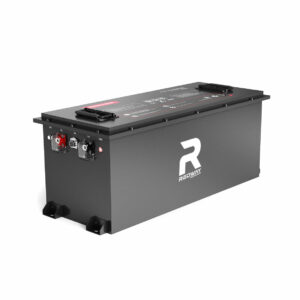How Do I Test a Used RV Battery Before Purchase?
To locate used RV batteries nearby, check local RV dealerships, battery retailers, salvage yards, or online marketplaces like Craigslist and Facebook Marketplace. Specialty RV repair shops and recycling centers may also stock refurbished batteries. Always verify battery health, age, and warranty coverage before purchasing.
Use a multimeter to check voltage (12.6V+ for full charge). Perform a load test to assess capacity under demand. Inspect terminals for corrosion and check manufacturing dates (avoid batteries older than 3 years). Ask sellers for cycle count history or certification from organizations like BCI (Battery Council International).
When testing voltage, ensure the battery hasn’t been charged recently – let it rest for 4 hours before measurement. For load testing, apply a 50% discharge rate using a carbon pile tester and monitor voltage stability. Batteries maintaining above 10.5V during a 15-minute load test are generally viable. Advanced buyers can use hydrometers to measure specific gravity in lead-acid cells (1.265+ indicates good health).
| Voltage Reading | Charge Status | Action Recommended |
|---|---|---|
| 12.7V+ | Fully Charged | Proceed with load test |
| 12.4V-12.6V | Partially Charged | Recharge and retest |
| <12.4V | Depleted | Investigate sulfation |
What Maintenance Do Used RV Batteries Require?
For lead-acid: Check electrolyte levels monthly, clean terminals with baking soda, and equalize charge quarterly. Lithium batteries need no watering but require storage at 50% charge in dry, cool environments. All types benefit from desulfation chargers and annual capacity testing.

Lead-acid batteries demand vigilant water level maintenance – use distilled water to keep plates submerged. Apply anti-corrosion spray to terminals after cleaning. For lithium models, maintain state of charge between 20-80% during regular use to maximize lifespan. Both types require temperature management; avoid storing below 32°F or above 104°F. Implement a monthly inspection routine:
| Task | Lead-Acid | Lithium |
|---|---|---|
| Voltage Check | Weekly | Monthly |
| Terminal Cleaning | Bi-Monthly | Annually |
| Full Discharge Cycle | Never | Every 3 Months |
Expert Views
The used RV battery market has grown 40% since 2020 as campers seek affordable power solutions. Buyers should prioritize batteries with verified cycle counts and OEM refurbishment. Lithium’s dominance is shifting the market – we’re seeing 300% more inquiries for used LiFePO4 packs than lead-acid this year.” – RV Power Systems Specialist
FAQs
- Can I mix used and new batteries in my RV?
- No. Mixing ages or chemistries creates imbalance, reducing performance and lifespan.
- Do used RV batteries come with warranties?
- Most refurbished batteries include 30-180 day warranties. Original manufacturer warranties are typically voided.
- How much does a used RV battery weigh?
- Lead-acid: 50-70 lbs. Lithium: 25-40 lbs. Verify your RV’s weight capacity before purchase.
Conclusion
Purchasing used RV batteries requires balancing cost savings with technical diligence. Focus on recent manufacturing dates, verified performance metrics, and seller warranties. Lithium options increasingly provide better long-term value despite higher upfront costs. Always pair batteries with proper charging systems and monitor health through voltage tracking apps like Victron BMV-712.
